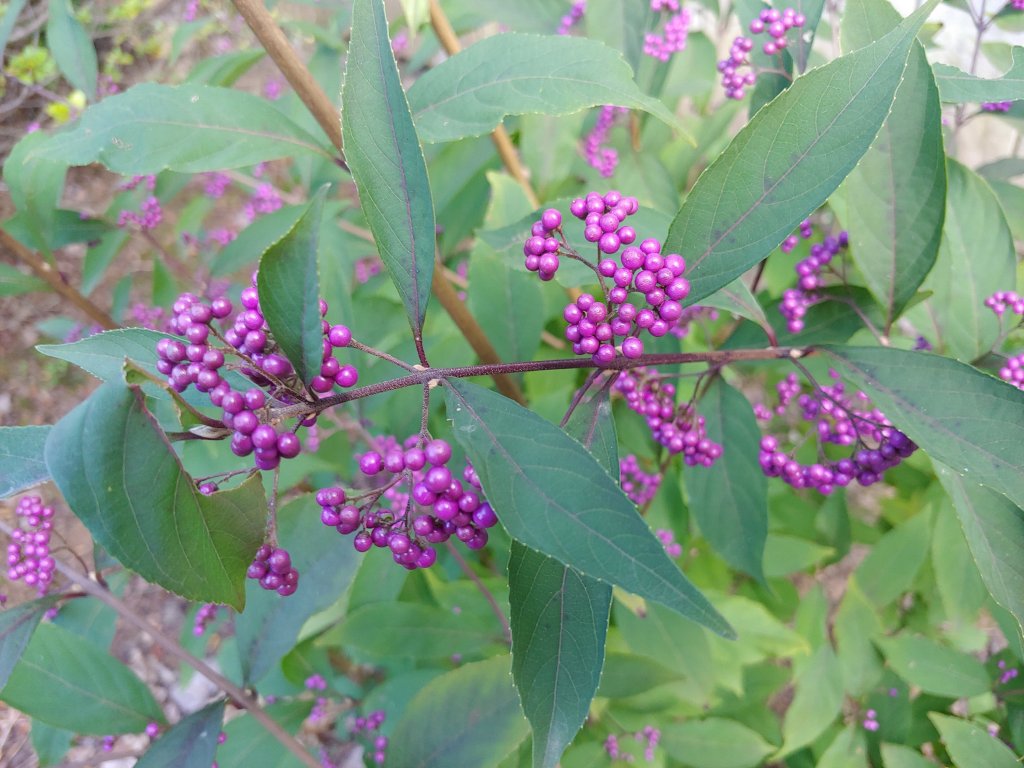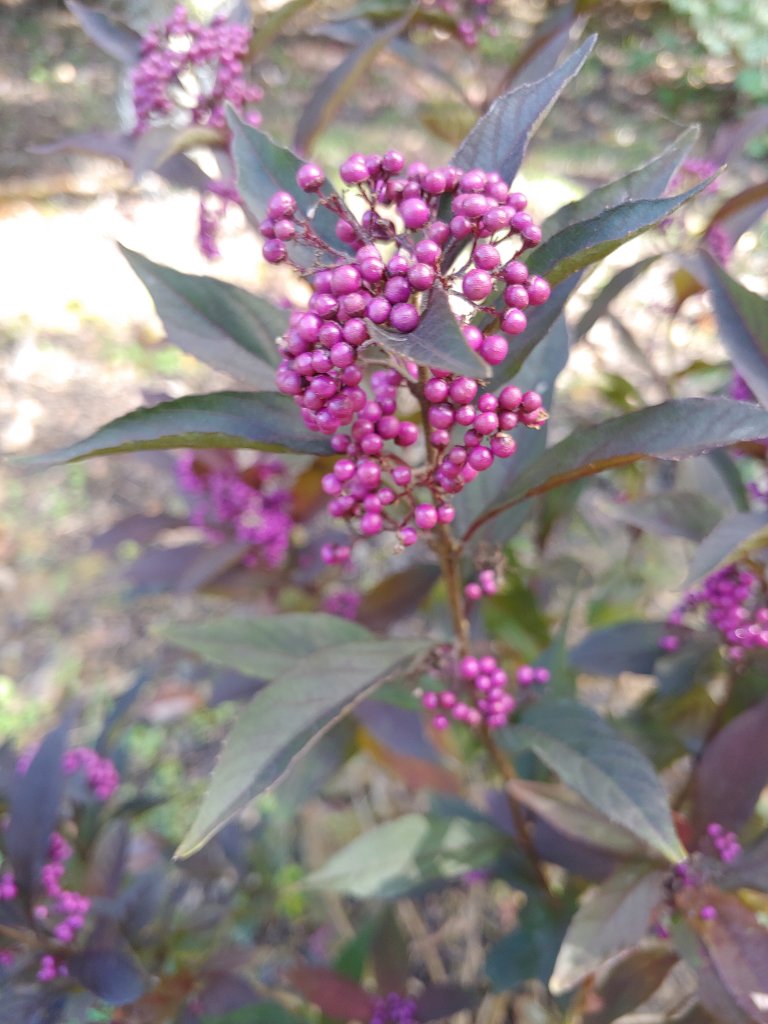Not that I agree with my wife on the particulars, but there is a hazard when a garden is stuffed with too many plants. I often lose track of what’s where, or even what’s here, and after a recent display of beautyberries (Callicarpa), an inquiry pushed me to inventory, and discover disappointingly, that none were our native Callicarpa americana. Of course, this deficiency was quickly remedied, with an excellent spot found partially beneath a Katsura tree (Cercidiphyllum japonicum) where it will have enough room to grow, but will also be close enough to the front of the planting bed so that berries can be enjoyed.

The clusters of berries of the native beautyberry encircle the stem, so it is easily identified, but otherwise it is similar in appearance to ones of Japanese origin that are more commonly found in garden centers. Two beautyberries planted earlier this spring are quite dissimilar, with later and smaller berries that are peaking in early autumn. All will continue their glorious display for weeks.

Callicarpa ‘Purple Pearls’ (above) and ‘Pearl Glam’ (below) have erect stems rather than arching branching of others, and also much darker foliage than the unremarkable green of the Japanese and American beautyberries. Do I prefer one over the other? The dense clusters of larger berries of the Japanese and American are more ornamental. The foliage of the newly introduced hybrids is superior, and both are exceptional additions to the garden.

When I get around to growing beautyberry (here, far from the native range), I intend to get the straight species as it is found in the wild. They are actually available from a few sources. With so many cultivars, it seems like there would not be much market for the straight species.